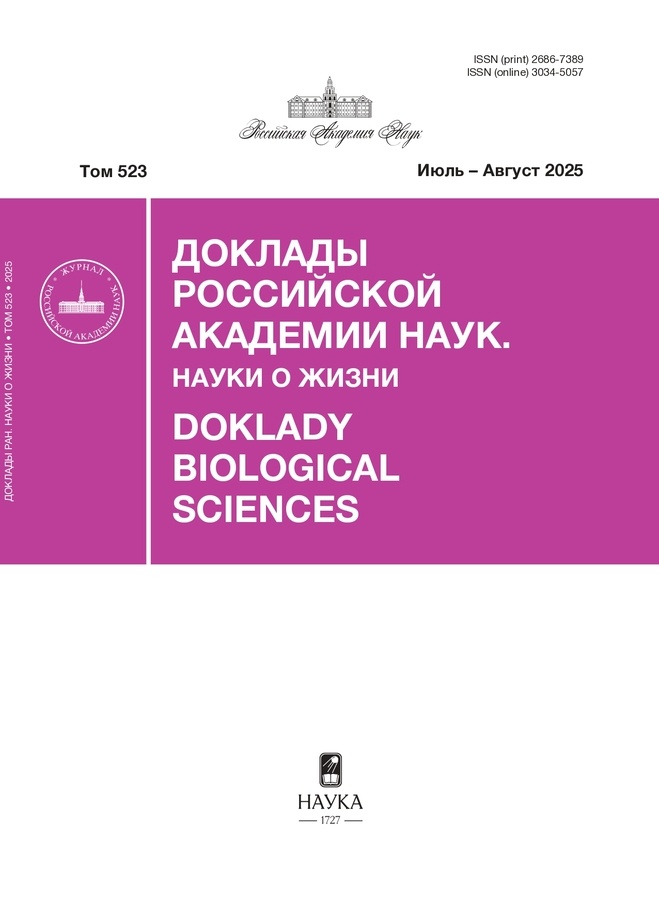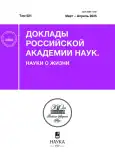Новые ингибиторы киназ, избирательно цитотоксичные для опухолевых клеток
- Авторы: Скворцов Д.А.1, Жиркина И.В.1, Ипатова Д.А.1, Писарев А.Р.2, Малышев А.С.3,4, Иваненков Ю.А.3,4, Карцев В.Г.5, Донцова О.А.1,6,7
-
Учреждения:
- Научно-исследовательский институт физико-химической биологии им. А.Н. Белозерского Московского государственного университета имени М.В. Ломоносова
- Высшая школа экономики
- Московский научно-исследовательский онкологический институт имени П.А. Герцена
- Федеральное государственное унитарное предприятие Научно-исследовательский институт автоматики им. А.Н. Духова
- ООО “ИнтерБиоСкрин”
- Сколковский институт науки и технологий
- Федеральное государственное бюджетное учреждение науки Институт биоорганической химии им. академиков М.М. Шемякина и Ю.А. Овчинникова Российской академии наук
- Выпуск: Том 521, № 1 (2025)
- Страницы: 253-259
- Раздел: Статьи
- URL: https://vestnik.nvsu.ru/2686-7389/article/view/684069
- DOI: https://doi.org/10.31857/S2686738925020159
- ID: 684069
Цитировать
Полный текст
Аннотация
Для поиска избирательно действующих на опухолевые клетки веществ в работе использован фенотипический скрининг в сокультуре опухолевых клеток с неопухолевыми. Найденное избирательно цитотоксичное в сокультуре опухолевых клеток молочной железы MCF7' и неопухолевых MCF10A соединение STOCK7S-36520 содержит структурные элементы, характерные для ингибиторов киназ. При анализе соединения STOCK7S-36520 и его производного STOCK7S-47016 оказалось, что они являются новыми мультикиназными ингибиторами. Наибольшее ингибирование в 84% показало соединение STOCK7S-47016 против киназы GCK. Интерес представляет значимая избирательность действия против некоторых из исследованных клеточных линий: индекс селективности STOCK7S-36520 против линии опухолевых клеток простаты PC3 составляет 29 раз по сравнению с модельной линией неопухолевых фибробластов VA13.
Ключевые слова
Полный текст
Об авторах
Д. А. Скворцов
Научно-исследовательский институт физико-химической биологии им. А.Н. Белозерского Московского государственного университета имени М.В. Ломоносова
Автор, ответственный за переписку.
Email: skvorratd@mail.ru
Химический факультет
Россия, МоскваИ. В. Жиркина
Научно-исследовательский институт физико-химической биологии им. А.Н. Белозерского Московского государственного университета имени М.В. Ломоносова
Email: skvorratd@mail.ru
Химический факультет
Россия, МоскваД. А. Ипатова
Научно-исследовательский институт физико-химической биологии им. А.Н. Белозерского Московского государственного университета имени М.В. Ломоносова
Email: skvorratd@mail.ru
Химический факультет
Россия, МоскваА. Р. Писарев
Высшая школа экономики
Email: skvorratd@mail.ru
Факультет биологии и биотехнологий
Россия, МоскваА. С. Малышев
Московский научно-исследовательский онкологический институт имени П.А. Герцена; Федеральное государственное унитарное предприятие Научно-исследовательский институт автоматики им. А.Н. Духова
Email: skvorratd@mail.ru
Россия, Москва; Москва
Ю. А. Иваненков
Московский научно-исследовательский онкологический институт имени П.А. Герцена; Федеральное государственное унитарное предприятие Научно-исследовательский институт автоматики им. А.Н. Духова
Email: skvorratd@mail.ru
Россия, Москва; Москва
В. Г. Карцев
ООО “ИнтерБиоСкрин”
Email: skvorratd@mail.ru
Россия, Черноголовка
О. А. Донцова
Научно-исследовательский институт физико-химической биологии им. А.Н. Белозерского Московского государственного университета имени М.В. Ломоносова; Сколковский институт науки и технологий; Федеральное государственное бюджетное учреждение науки Институт биоорганической химии им. академиков М.М. Шемякина и Ю.А. Овчинникова Российской академии наук
Email: skvorratd@mail.ru
Химический факультет
Россия, Москва; Москва; МоскваСписок литературы
- Jaffee, E.M., C.V. Dang, D.B. Agus, et al., Future cancer research priorities in the USA: a Lancet Oncology Commission // Lancet Oncol, 2017. 18(11): P. e653–e706.
- Seebacher, N.A., A.E. Stacy, G.M. Porter, et al., Clinical development of targeted and immune based anti-cancer therapies. // J Exp Clin Cancer Res, 2019. 38(1): P. 156.
- Levitzki, A. and S. Klein, My journey from tyrosine phosphorylation inhibitors to targeted immune therapy as strategies to combat cancer. // Proc Natl Acad Sci USA, 2019. 116(24): P. 11579–11586.
- Sadri, A., Is Target-Based Drug Discovery Efficient? Discovery and “Off-Target” Mechanisms of All Drugs // J Med Chem, 2023. 66(18): P. 12651–12677.
- Ediriweera, M.K., K.H. Tennekoon, and S.R. Samarakoon, In vitro assays and techniques utilized in anticancer drug discovery. // J Appl Toxicol, 2019. 39(1): P. 38–71.
- Cagan, R., Drug screening using model systems: some basics. // Dis Model Mech, 2016. 9(11): P. 1241–1244.
- Spink, B.C., R.W. Cole, B.H. Katz, et al., Inhibition of MCF-7 breast cancer cell proliferation by MCF-10A breast epithelial cells in coculture. // Cell Biol Int, 2006. 30(3): P. 227–38.
- Skvortsov, D.A., M.A. Kalinina, I.V. Zhirkina, et al., From Toxicity to Selectivity: Coculture of the Fluorescent Tumor and Non-Tumor Lung Cells and High-Throughput Screening of Anticancer Compound. // Front. Pharmacol., 2021. 12: P. 1–11.
- Xing, L., J. Klug-Mcleod, B. Rai, et al., Kinase hinge binding scaffolds and their hydrogen bond patterns. // Bioorg Med Chem, 2015. 23(19): P. 6520–7.
- Cohen, P., D. Cross, and P.A. Janne, Kinase drug discovery 20 years after imatinib: progress and future directions. // Nat Rev Drug Discov, 2021. 20(7): P. 551–569.
- Kalinina, M.A., D.A. Skvortsov, M.P. Rubtsova, et al., Cytotoxicity Test Based on Human Cells Labeled with Fluorescent Proteins: Fluorimetry, Photography, and Scanning for High-Throughput Assay. // Mol Imaging Biol, 2018. 20(3): P. 368–377.
- Mosmann, T., Rapid colorimetric assay for cellular growth and survival: application to proliferation and cytotoxicity assays // J Immunol Methods, 1983. 65(1-2): P. 55–63.
- Brenchley, G., L.j. Farmer, E.M. Harrington, et al. Thiazoles useful as inhibitors of protein kinases.2003 Last Update [cited Access 2003; Edition:[Description].
- Andersen, C.B., Y. Wan, J.W. Chang, et al., Discovery of selective aminothiazole aurora kinase inhibitors. // ACS Chem Biol, 2008. 3(3): P. 180–92.
- Skvortsov, D., I. Zhirkina, M. Kalinina, et al. Application of indenofluorene derivative for inhibition and/or elimination of tumor cells.2023 Last Update [cited Access 2023; Edition:[Description].
- Weisberg, E., P. Manley, J. Mestan, et al., AMN107 (nilotinib): a novel and selective inhibitor of BCR-ABL. // Br J Cancer, 2006. 94(12): P. 1765–9.
- Manley, P.W., P. Drueckes, G. Fendrich, et al., Extended kinase profile and properties of the protein kinase inhibitor nilotinib. // Biochim Biophys Acta, 2010. 1804(3): P. 445–53.
- Tsherniak, A., F. Vazquez, P.G. Montgomery, et al., Defining a Cancer Dependency Map. // Cell, 2017. 170(3): P. 564-576 e16.
Дополнительные файлы












